This Friday I am dedicating my fact file to the animal which has given me one of the most incredible moments of my 21 years of existence – the African Wild Dog also known as the African Hunting Dog or the Painted Dog.
Animal relation – They are canines so are related to wolves and of course domestic dogs. They are about the size of an english pointer or a greyhound. Perhaps their two most distinct features are their colour splash coats and their massive Mickey Mouse ears. People may confuse wild dogs with hyenas but apart from sharing the same Sub-Saharan range and enjoying a tasty wildebeest from time to time, these two species are not related. Hyenas are actually more closely linked to feline species!
Where to find them – In theory they can be found in dry, savanna areas of Eastern and Southern Africa. In practice they are nearly impossible to find! This is mainly due to their status as an endangered species. Their numbers are now about 6.600 and are still declining. Wild dogs also follow a particularly nomadic lifestyle which means they travel vast distances each day. Once a litter is born they will limit their traveling.
Diet – They are opportunist hunters so aren’t too fussy when it comes to meat. Commonly, they kill medium sized antelopes such as impala.
Cool fact one – Wild dogs are highly sociable animals and live in packs of 6 to 20 although much larger numbers are not uncommon. They can often be seen in social rituals and ceremonies especially before a hunt where they vocalise in tweets and chirps and nudge one another.
Cool fact two – They are impeccable hunters and have an 80% success rate on bringing down prey compared to lions which only have a 30% kill rate. Their success lies in their teamwork and their speed and agility.
Cool fact three – They may be lethal when dismembering their prey but wild dogs are extremely caring to their elderly and young often allowing them the first pickings of a kill. The sweethearts!
Since our first safari in Africa, my family and I have been fascinated by wild dogs. They are beautiful and more elusive than a clean piece of cutlery in a student’s household. Wherever we went, from the Kalahari dessert to the Serengeti, our ears always pricked up at the mention of their name. We even dedicated an entire trip to them, stopping off at all the hot spots in Botswana and Zimbabwe in a vain hope of catching a glimpse of them. We came close once and followed their tracks for about half an hour but they were too quick for us.
Despite not seeing any wild dogs that trip was amazing and we visited the Painted Dog Conservation centre in Zimbabwe. They are a wonderful charity who run education programmes for children and the wider community to teach them how they can help save the species. They also have a rehabilitation programme aimed at taking in a sick and injured dogs, allowing them time and space to heal and then releasing them back into the wild. There was a particularly playful male named John when we visited who was chirping away like a blackbird in spring.
On a separate trip to Africa, without my family, I became the luckiest girl in the world and saw two stunningly beautiful wild dogs. My best friend and I were in a taxi on our way back from Chobe where we saw lots of cool animals. We were just driving along the huge stretch of road between Botswana and Zimbabwe when there they were. Two dogs to my right, just ambling along, getting on with their lives. It was a double take moment. Where they stray dogs? Hyenas even? No, after years of studying their appearance in wildlife books and internet sites I knew those colours, that outline, those huge ears off by heart.
I forced the taxi driver to stop so I could admire them and breath in the most magical few moments of my life. It can only have been about 30 seconds. One of the pair stopped to look at us. I greeted its stare with joyful tears and a smile up to my ears. We shared a moment, I, an average English girl with a messy room and an even messier mind, shared a moment with this incredibly specialised animal; capable of bringing down prey more than seven times its mass, gifted in holding together a huge pack and caring for every single member, able to roam for 30 miles across arid landscapes every day. It was humbling and it was magical.
I was not able to share this moment with my best friend or the taxi driver who were indifferent at best and totally unaware of the personal significance of this sighting. 11 years after my first visit to the continent I had finally been allowed the privilege of witnessing this African wonder – the African wild dog.
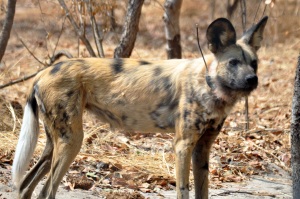
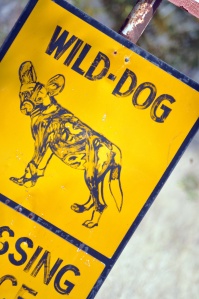
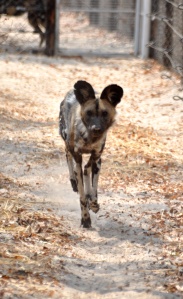
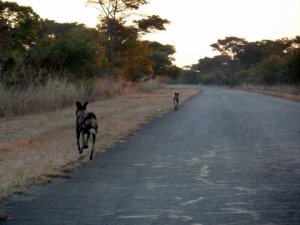
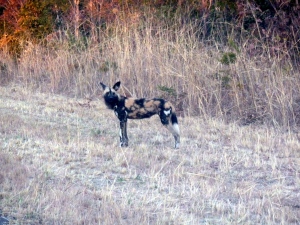



You lucky thing.
LikeLike
Fantastic, I’m so glad you finally got to see a wild one. 🙂 They are gorgeous animals that sorely need more awareness raised for.
LikeLike